Construction staking is an imperative phase during the building process as it connects design with actual construction. This significant aspect of construction guarantees that constructions comply with architectural blueprints, legal limits, and predetermined structures. In this comprehensive manual on construction staking, we will explore its significance, techniques employed, and its impact in detail to provide a greater understanding of how crucial this stage is throughout the entire build procedure.
Understanding Construction Staking
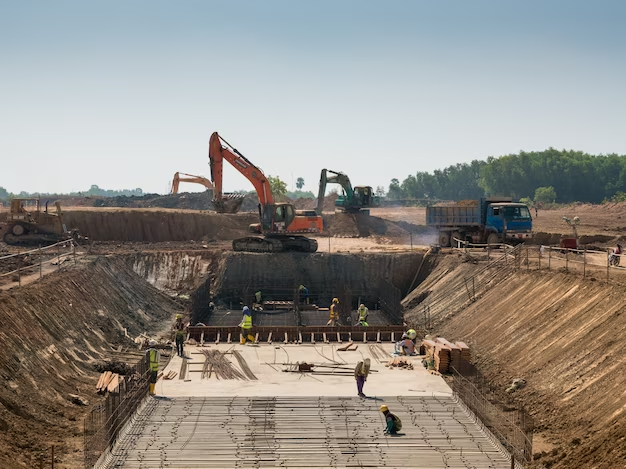
At its essence, construction staking is a procedure carried out by expert surveyors wherein plans for building are transformed from sketches into tangible markers on the terrain. This type of surveying, referred to as “construction staking,” facilitates contractors in determining exactly where they should situate structures, roads or utilities. It’s an imperative phase that guarantees precision during the construction process while adhering to design guidelines and zoning laws.
Types of Construction Staking
To ensure accurate implementation of a construction project, diverse kinds of construction staking are utilized for various objectives. Here we’ll take an insight into four key types of this approach.
Rough Grade Staking
Rough Grade Staking is a crucial aspect of construction, especially when undertaking significant changes to the landscape. It involves outlining proposed land features such as embankments and ditches. The primary goal of Rough Grade Staking is to ensure that site elevations and contours align with project specifications. These are some essential elements involved in Rough Grade Staking:
- Establishing the preferred heights and inclines of mounds and channels.
- Designating the areas where earthmoving activities, such as digging or depositing soil, are required.
- Proper drainage can be ensured by directing the flow of water through ditches and swales.
- Setting benchmarks for determining the ultimate rating of the building area.
Proper topography and drainage are fundamental to the overall functionality and appeal of a construction project; hence, Rough Grade Staking is critical in achieving these objectives.
Site Layout Staking
Site Layout Staking is a common practice utilized in several urban construction projects aiming to establish precise locations of diverse structures and components on the site. This type of staking holds great significance as it guarantees that buildings, parking lots, roads, and other critical features related to the project’s plans and blueprints are accurately positioned. To elaborate further, here are some crucial aspects associated with Site Layout Staking:
- Determining the accurate measurements and placements of constructions, encompassing base structures as well as sides.
- The act of identifying the positions of parking spots, vehicle entrances and exits, as well as footpaths.
- Specifying the arrangement of thoroughfares, encompassing lanes, junctions and edges.
- Distinguishing the locations of landscaping components, such as trees and shrubs.
The implementation of Site Layout Staking is crucial to avoid construction errors and guarantee that all architectural and engineering designs are accurately aligned with structures and elements.
Utility Layout Staking
Utility Layout Staking plays a crucial role in construction staking as it is primarily responsible for marking the designated areas where different utilities will be installed, such as water lines, gas pipes, electrical conduits and other essential infrastructure. The main objective of Utility Layout Staking is to guarantee that all utility placements are precisely located without any errors or potential conflicts that may compromise safety measures. Following are some vital elements associated with this method:
- The act of identifying the paths and measurements of subterranean utility lines.
- The task involves recognizing the locations of utility structures, which include manholes and utility poles.
- Making certain that site features or buildings do not intersect with utility lines.
- Offering unambiguous direction for utility installation crews to prevent harm to pre-existing utilities.
Utility Layout Staking plays a crucial role in averting construction issues related to utilities including harm to pre-existing infrastructure or clashes with other site components.
Slope Staking
When it comes to large earthmoving projects that require significant terrain alterations, Slope Staking plays a crucial role. This method centers on identifying the areas where cut and fill are necessary in order to achieve the desired slopes and contours for construction sites. By utilizing Slope Staking techniques, excavated materials (cut) as well as filling material (fill) can be properly distributed while ensuring site stability and adequate drainage. Some of the essential elements belonging to this type of staking involve:
- Determining the appropriate inclines for both embankments and excavations.
- Indicating the spots where excavations and embankments must be made in order to achieve a balanced earthwork volume.
- Making sure that the inclines comply with safety and stability criteria.
- Directing the positioning of retaining walls or measures for erosion control.
For ensuring structural stability and aesthetic appeal, achieving the appropriate grading of a construction site is essential. Therefore, Slope Staking plays an indispensable role in this regard.
The Process of Construction Staking
The process of construction staking surveying is a multifaceted procedure that plays a pivotal role in the successful execution of building projects. It involves several key steps, each of which contributes to the overall accuracy and efficiency of the construction process:
| Step | Description |
| Initial Survey | Before staking, conduct a thorough site survey, including topography, existing structures, and potential obstacles. Ensure readiness for construction challenges. |
| Plan Analysis | Analyze construction plans meticulously after the initial survey. Examine all project aspects, from architectural designs to engineering specifications, for a comprehensive understanding essential for precise staking and construction. |
| Field Staking | Translate project plans into the physical site by marking key points with stakes, flags, or spray paint. These markers guide the construction team in erecting structures, excavation, and utility placement, providing a tangible guide throughout construction. |
| Ongoing Adjustments | Construction staking is an ongoing process. Revisit the site during construction to make necessary adjustments or add new markings as required. Flexibility is vital for accommodating unforeseen challenges or scope changes, ensuring construction remains on course within specified parameters. |
The methodical approach of construction staking serves as the foundation for a successful construction project, providing the construction team with a clear, precise, and reliable roadmap. By minimizing errors and delays, construction staking contributes significantly to the overall efficiency and quality of the construction process.
Importance of Construction Staking in Building Projects
Understanding the significance of construction staking in the realm of construction is paramount. This indispensable process serves several critical purposes, all of which contribute to the overall success and integrity of building projects:
- Accuracy and Precision: Construction staking ensures that buildings and structures are constructed with pinpoint accuracy, precisely where they are intended to be. This level of precision is essential for the structural integrity and functionality of the final product.
- Legal Compliance: By adhering to zoning laws and building codes, construction staking helps keep construction projects within the bounds of legal and regulatory requirements. This not only ensures the project’s legality but also mitigates the risk of costly legal issues in the future.
- Cost Efficiency: The meticulous planning and execution facilitated by construction staking significantly reduce the risk of costly mistakes and the need for rework. This translates to cost savings throughout the construction process, benefiting both project owners and contractors.
- Safety: Proper construction staking ensures that utilities are placed safely and correctly, reducing the risk of accidents and potential hazards on the construction site. Safety is a paramount concern in any construction project, and construction staking plays a crucial role in mitigating risks.
Conclusion
construction staking and construction staking surveying are indispensable elements of the construction process. They ensure that projects are built to specification, within legal bounds, and in a safe, efficient manner. Understanding this process is crucial for anyone involved in construction, from architects and engineers to contractors and builders. As the construction industry continues to evolve, the role of construction staking remains a constant – a foundational step in turning design dreams into concrete reality.
FAQ
Q: What equipment is used in construction staking?
A: Equipment such as GPS units, theodolites, total stations, and laser levels are commonly used in construction staking surveying.
Q: How often is construction staking needed during a project?
A: The frequency depends on the project’s complexity and size. It can range from a single session for a small project to multiple sessions for larger, more complex projects.
Q: Can construction proceed without staking?
A: Technically, it can, but it’s highly discouraged due to the risk of inaccuracies, safety issues, and legal complications.
Q: Who performs construction staking?
A: Professional land surveyors or qualified construction staking surveying teams usually perform this task.


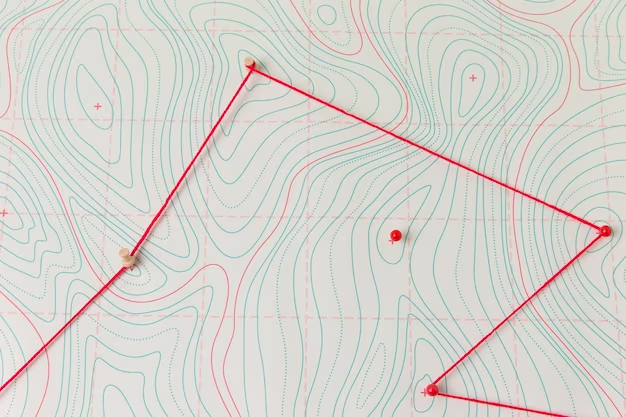

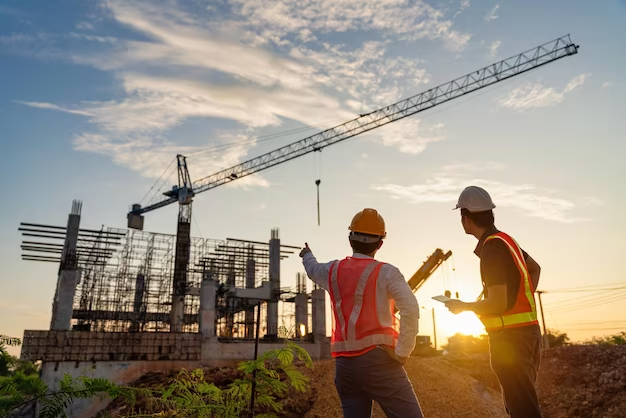


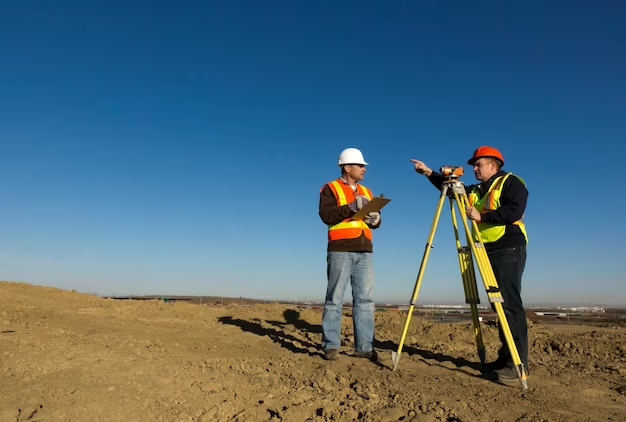
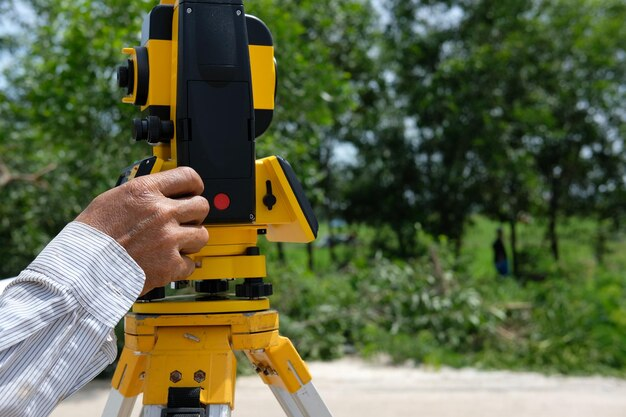

+ There are no comments
Add yours